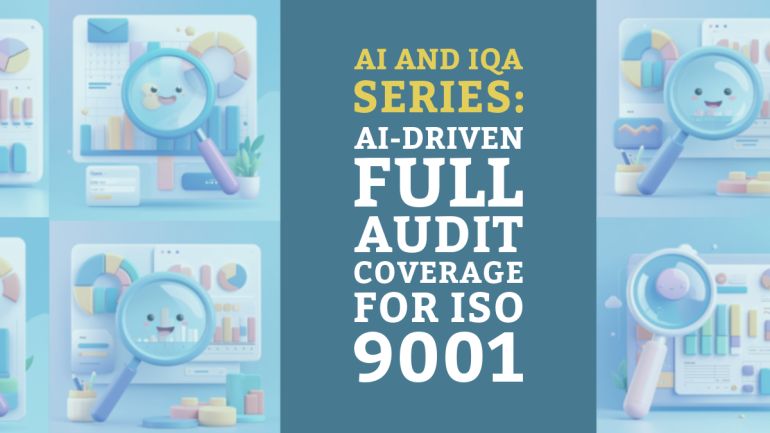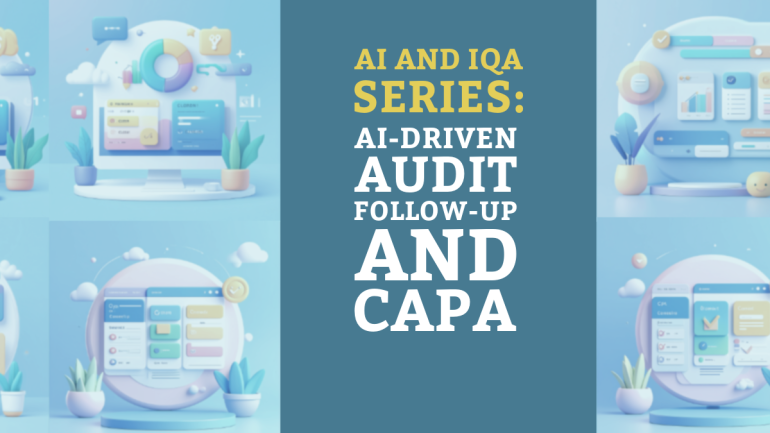Table of Contents
TL;DR: AI and CSR Series: Community-Centric AI for Social Good
- Community Involvement & ISO 26000 – Community involvement and development is a core subject of ISO 26000, emphasizing social inclusion, education, health, and sustainable local growth. AI can align with these goals by empowering communities through inclusive technology and AI for good initiatives.
- AI for Good & Community Empowerment – When applied ethically, AI has huge potential to be a community empowerment tool – from bridging digital divides and enhancing local education to improving healthcare and climate resilience. Responsible, community-centric AI projects are helping underserved groups (youth, elderly, rural, minorities) access new opportunities and services.
- Inclusive Innovation & Stakeholder Engagement – Inclusive innovation in AI means involving stakeholders at all levels. By engaging local communities in the design and deployment of AI (in line with ISO 26000’s guidance on stakeholder dialogue), organizations ensure the technology addresses real needs, respects cultural context, and promotes equity.
- Real-World Examples (2023–2025) – Across Asia (especially Singapore) and globally, a range of corporate, government, and NGO-led AI initiatives illustrate community-centric AI in action. Examples include AI skilling programs for underserved youth, AI assistants for eldercare and mental health, language-inclusive AI platforms connecting rural populations, and AI-driven climate/disaster tools protecting vulnerable communities.
In this final installment of the AI and CSR Series, we shift focus to community-centric AI – exploring how Artificial Intelligence can support Community Involvement and Development, one of the seven core subjects of ISO 26000 (the international CSR guidance standard). Previous entries in this series examined AI’s impact on labor rights, human rights, environmental sustainability, and fair governance. Now we consider how AI can help organizations uplift communities and contribute to social good in alignment with CSR principles.
ISO 26000 defines community involvement and development as an organization’s commitment to building sustainable local communities where education and well-being continually improve. It encompasses issues like community engagement, education and culture, employment and skills, technology access, wealth creation, health, and social investment. These are precisely areas where “AI for Good” initiatives can make a difference. By deploying AI solutions for social benefit – often termed AI for Good – companies, governments, and NGOs are finding innovative ways to:
- Expand access to education and digital skills (e.g. AI training programs for youth or underprivileged groups).
- Improve healthcare and well-being (e.g. AI assistive technologies for seniors or persons with disabilities).
- Create economic opportunities (e.g. AI tools for small businesses or farmers to increase productivity and income).
- Enhance technology development and access in underserved areas (e.g. localized AI applications that cater to minority languages or rural connectivity).
- Invest in community resilience (e.g. AI early-warning systems for natural disasters and public safety).
Done right, AI can act as a “great equaliser”. For instance, Singapore’s National AI Strategy explicitly aims to “raise up individuals, businesses, and communities to use AI with confidence, discernment, and trust,” positioning AI as a tool that “equips people with the capabilities and resources to thrive in an AI-enabled future”. In other words, responsible AI deployment can empower even small communities with resources once available only to large organizations or wealthy populations. From smart village programs in developing countries to AI-driven public services in smart cities, the goal is to ensure that no community is left behind in the AI era.
However, technology alone doesn’t automatically lead to social good. If AI systems are developed without community input or awareness, they risk exacerbating digital divides or failing to address actual local needs. Thus, a community-centric AI approach is essential: this means putting community needs at the center of AI design and ensuring solutions are accessible and beneficial to those they intend to help. In the next sections, we discuss how inclusive innovation and stakeholder engagement ground this approach, and we highlight real-world examples (from 2023–2025) where AI is being harnessed for community development in Asia and around the world.
Inclusive Innovation through Stakeholder Engagement
One key to community-centric AI is inclusive innovation – developing AI solutions with communities, not just for them. This entails actively involving stakeholders (local residents, end-users, community leaders, civil society groups) in the AI project lifecycle, from planning and design to implementation and oversight. Such stakeholder engagement is a cornerstone of both ISO 26000 and contemporary AI ethics frameworks. ISO 26000 urges organizations to identify and dialogue with stakeholders as part of their social responsibility, integrating stakeholders’ needs and values into decision-making. In practice, this means communities should have a voice in how AI technologies that affect them are built and used.
In the context of AI, inclusive innovation might involve co-creating solutions with community members (e.g. participatory design workshops where developers and local users brainstorm AI tools for local problems), or consulting stakeholders about potential impacts (e.g. town hall meetings to discuss a new AI surveillance system’s privacy implications). This collaborative approach helps ensure AI initiatives are culturally sensitive, ethically sound, and truly address on-the-ground challenges rather than a top-down idea of what communities need. It also builds trust and local capacity – as community members gain understanding and ownership of the technology, they are more likely to adopt and sustain it.
Recent dialogues in Asia emphasize the importance of bringing marginalized voices into AI governance and innovation. For example, at a 2024 regional seminar on AI inclusivity in Southeast Asia, experts highlighted that “ensuring that all voices — particularly those from underrepresented and vulnerable groups — are included in AI discussions is central to building equitable and resilient AI ecosystems.” This sentiment reflects a growing consensus: responsible AI engagement requires multi-stakeholder collaboration. Governments, industry, academia, and community representatives must work together so that AI deployment is guided by ethical considerations and local context, rather than solely by technological possibility or profit.
Crucially, engaging stakeholders leads to better outcomes. When local users and domain experts (teachers, doctors, farmers, etc.) contribute to an AI project, the resulting system is more likely to be user-friendly and address the real pain points. Moreover, it can preempt risks: community input can surface potential harms or biases early on. For instance, an AI tool for community healthcare can benefit from patients’ and caregivers’ insights about data privacy or cultural taboos, leading to safeguards that developers might otherwise overlook. Such dialogue upholds transparency and accountability, aligning with ISO 26000’s principles and building public confidence in AI.
In short, stakeholder engagement transforms AI development into an inclusive innovation process – one that empowers communities as active partners. By incorporating diverse perspectives, AI for social good projects become more inclusive in both design and impact. Next, we will see how these principles manifest in real-world initiatives, ranging from tech training for youth to AI healthcare for seniors, all aimed at community empowerment.
Community-Centric AI Initiatives in Action: Case Studies from Asia and Beyond
To illustrate how AI for good and community development come together, this section highlights several recent initiatives (2023–2025) that demonstrate community-centric AI in practice. These examples – spanning corporate, governmental, and non-profit efforts – show how AI is being leveraged to empower local communities such as youth, the elderly, rural populations, and underrepresented groups. They also reflect alignment with ISO 26000’s guidance on issues like education, health, technology access, and stakeholder partnership.
Empowering Youth with AI Skills and Opportunities
One fundamental way to involve communities in the AI era is to equip them with the skills and knowledge to participate. A notable example is a joint initiative by the United Nations Development Programme (UNDP) and Microsoft, launched in mid-2023, aimed at training underserved youth across Asia in AI. This regional collaboration plans to support “two million youth from underserved, underrepresented, and digitally excluded communities in Asia with AI fluency and skills for future development”. Through digital skills workshops, access to technology, and internships/certifications, the program seeks to bridge the digital divide among young people. By empowering youth with AI know-how, it not only improves their job prospects but also enables them to solve challenges in their own communities using technology. Such inclusive innovation builds a pipeline of diverse AI talent and ensures the next generation – including those from marginalized backgrounds – can actively shape an AI-driven future.
Corporate philanthropy is also boosting AI education in the region. In 2024, Google.org (the company’s charitable arm) partnered with the Asian Development Bank on a $15 million AI Opportunity Fund for Asia-Pacific. This fund supports NGOs and social enterprises in upskilling workers (especially from underserved communities) with critical AI and digital skills. By investing in human capital development, these initiatives align with ISO 26000’s emphasis on employment creation and skills development as part of community development. Importantly, they involve multiple stakeholders – governments, companies, and international agencies – collaborating to ensure AI literacy and opportunity reach disadvantaged groups like out-of-school youth or rural job-seekers.
AI for Elderly Care and Community Health
As populations age in many countries, communities face the challenge of caring for seniors with limited caregiving resources. In Singapore, where one in four citizens will be over 65 by 2030, organizations have turned to AI-driven solutions to support elderly care in the community. For example, local care homes have introduced humanoid robot companions to engage seniors in exercises and activities, helping to reduce loneliness and cognitive decline. “Dexie,” a social robot at a dementia care facility, leads patients in simple workouts and games – and staff report that some wandering patients become calmer and more focused in Dexie’s presence. Studies indicate such AI companions can be as effective as human interaction in improving seniors’ mental well-being.
On a wider scale, Singapore’s government is piloting AI systems for preventive healthcare and safety of the elderly. Housing estates have been outfitted with machine-learning based monitoring systems that detect if an elderly resident has a fall or shows unusual behavior, automatically alerting caregivers or neighbors. In 2024, a consortium of healthcare and tech partners launched “SoundKeepers,” a three-year pilot program developing an AI tool that uses voice biomarkers to detect early signs of depression among seniors. By analyzing subtle changes in speech patterns, this system aims to identify at-risk individuals before their condition worsens, enabling timely support. These examples show responsible AI engagement in community health – the solutions are introduced transparently in partnership with care providers, and they tackle genuine community issues (elder isolation, mental health) in a scalable way. Moreover, they align with ISO 26000’s focus on improving community health and well-being. The stakeholder dialogue component is evident too: healthcare professionals, elderly residents, and tech developers work together in refining these tools, addressing concerns like privacy and human touch (so that AI supplements rather than replaces human caregivers). Singapore’s approach is being watched by other aging societies as a model of community-centric AI for social good.
Bridging Language Barriers for Inclusive Development
In multilingual societies, language can be a major barrier that leaves some communities behind in the digital age. India’s ambitious Bhashini project exemplifies how AI can promote social inclusion by breaking down language barriers. Launched by the Government of India in 2022 and ramped up through 2023–24, Project Bhashini is an AI-powered national language translation mission. Its vision is to “empower citizens by providing access to digital services in their native languages,” harnessing AI for translation, speech recognition, and other language technologies across 22 of India’s languages. What makes Bhashini community-centric is not only its multilingual tech focus, but also its implementation strategy: it operates via a collaborative network of over 70 research institutions nationwide, exemplifying how academia, government, and industry can work together to address societal challenges through open AI solutions.
Already, Bhashini’s impact is far-reaching. In agriculture, it has been integrated with the government’s PM Kisan chatbot, allowing millions of farmers to access critical information (like crop advisories or subsidy details) in their mother tongues. This has helped over 110 million farmers (11 crore) better understand and benefit from government schemes. In local governance, Bhashini’s multilingual capabilities have been added to the eGramSwaraj portal, enabling Panchayats (village councils) to carry out proceedings and public communications in 22 languages – benefiting some 270,000 villages and greatly improving citizen engagement and transparency at the grassroots level. By making digital content and services available in diverse languages, the project empowers rural and non-English speaking communities to fully participate in socio-economic development. It addresses ISO 26000 issues like education and culture (preserving linguistic diversity), technology access, and inclusive governance. Bhashini also highlights the importance of open innovation: its AI language models are provided as open APIs for developers, encouraging further community-level innovation (such as apps for local dialects, voice assistants for the illiterate, etc.). In sum, this initiative demonstrates inclusive innovation – using AI to ensure language is not a barrier to development, thereby bringing marginalized groups into the fold of India’s digital growth.
AI for Climate Resilience and Disaster Relief
Community development is closely linked to safety and resilience, especially in regions prone to natural disasters or climate change impacts. Here, too, AI has emerged as a powerful ally for the public good. A standout example is Google’s AI-powered flood forecasting initiative, which has expanded globally after initial success in South Asia. Floods disproportionately affect developing communities, yet historically it has been difficult to get timely warnings to those at risk. In 2024, Google researchers published results demonstrating that advanced AI models can accurately predict river floods up to 7 days in advance, even in data-scarce regions. This breakthrough led to the expansion of Google’s Flood Hub platform to cover 80 countries, providing free real-time flood forecasts to the public and alerting an estimated 460 million people in vulnerable areas.
The impact on communities is tangible: with a week’s warning, local authorities and residents can prepare – safeguarding homes, evacuating if necessary, or protecting livestock and assets – which significantly reduces harm. In countries like India and Bangladesh where this AI system was piloted, it’s credited with saving lives by enabling anticipatory action at the community level. Importantly, Google collaborates with local governments, hydrologists, and NGOs to ensure the forecasts reach those who need them (for instance, through alerts on Google Search, Maps, Android notifications, or partnerships with SMS services for remote villages). This multi-stakeholder approach echoes ISO 26000’s call for community involvement: by working with on-the-ground organizations, the initiative respects local knowledge and communication channels, increasing trust in the AI predictions. It exemplifies AI for good on a global scale – using cutting-edge AI as a form of social investment to protect communities from climate disasters. Other tech companies and non-profits are following suit (for example, AI models for earthquake damage assessment or wildfire detection), further proving that when aligned with community needs, AI can bolster environmental and disaster resilience efforts that underpin sustainable community development.
Balancing Innovation with Ethics and Inclusion
Across these cases, a common thread is the alignment with ethical and inclusive AI practices. Each initiative explicitly considers who benefits and how to involve those stakeholders: whether it’s training youth alongside industry partners, testing eldercare robots with nurses and patients, building language AI with local universities, or deploying climate AI in concert with governments and aid agencies. They show that community-centric AI is not just about deploying technology in communities, but about a two-way engagement – technology shaping communities and communities shaping the technology. This balance is crucial for responsible AI engagement.
Of course, challenges remain. Ensuring long-term sustainability of these projects, protecting privacy and rights, and measuring social impact are ongoing tasks. For instance, while AI can augment caregivers, it mustn’t replace human empathy – a nuance Singapore’s health officials are mindful of. Similarly, language AI must continuously adapt to dialects and avoid reinforcing dominant languages over minority ones. The stakeholder dialogue must therefore be continuous, not one-off: community feedback loops, ethical oversight committees, and inclusive governance frameworks will be key to maintaining trust as these AI systems evolve.
Overall, the trajectory is encouraging: from Asia to Africa to the Americas, more initiatives are putting AI in service of community development. This mirrors the broader CSR shift toward stakeholder capitalism – recognizing that businesses and institutions have a duty not just to shareholders, but to society at large. By following guidelines like ISO 26000 and emerging AI ethics standards, organizations can ensure that their AI innovations genuinely contribute to social good and inclusive growth.
Conclusion: Towards Community-Centric AI for Social Good
As we conclude the AI and CSR Series with this exploration of community-centric AI, the key takeaway is clear: AI can be a powerful enabler of community involvement and development, but only if humans intentionally guide it in that direction. Aligning AI projects with ISO 26000’s principles – such as social inclusion, education, health, and stakeholder engagement – provides a useful roadmap for maximizing positive impact. When communities are engaged as stakeholders, AI solutions tend to be more equitable, culturally appropriate, and widely accepted. From smart community programs in Singapore to grassroots AI innovations in rural India, the 2023–2025 period has shown a blossoming of ideas and efforts that pair technological innovation with social responsibility.
The journey doesn’t end here. As AI continues to advance (with new tools like generative AI, robotics, and beyond), maintaining a community-centric ethos will be critical. Organizations should continue to ask: Who benefits from this AI? Who might be left out or harmed? How can we involve those voices early? These questions echo the spirit of ISO 26000 and will ensure that the next wave of AI developments contributes to sustainable development and social good. In essence, the future of responsible AI lies in keeping it anchored to human and community values. By doing so, AI can truly become a catalyst for inclusive innovation – helping build a world where technology and society progress hand in hand, and every community has the opportunity to flourish in the AI era.
FAQ: Community Involvement, AI Ethics, and Social Good
Q1. What is “community-centric AI” in the context of CSR?
A: Community-centric AI refers to designing and deploying artificial intelligence with a focus on benefiting local communities and addressing their needs. In a CSR context, it means aligning AI initiatives with social responsibility goals – for example, using AI to improve education, health, or economic opportunities for a community, and involving community stakeholders in the process.
Q2. How does ISO 26000 relate to AI and community development?
A: ISO 26000 provides guidance on social responsibility, and one of its core subjects is Community Involvement and Development. While it doesn’t prescribe specific technologies, its principles (like stakeholder engagement, social inclusion, and improving local well-being) can be applied to AI projects. In practice, this means using AI in ways that support education, health, equity, and sustainable development at the community level, in line with ISO 26000’s guidance.
Q3. What are some examples of AI for social good in communities?
A: Recent examples include AI-driven education programs for underserved youth, healthcare AI tools that assist the elderly (like fall detectors or chatbots that monitor mental health), AI translation platforms that break language barriers for rural populations, and AI early-warning systems for natural disasters. These initiatives – many in Asia and globally – demonstrate AI being used to empower communities, such as training young people with digital skills or protecting villages from flood risks.
Q4. Why is stakeholder engagement important in community AI projects?
A: Engaging stakeholders (community members, local leaders, NGOs, etc.) ensures that AI projects are grounded in real needs and earn public trust. When communities participate in planning and feedback, the AI solutions are more likely to be culturally appropriate, inclusive, and effective. Stakeholder engagement also helps identify potential ethical issues or unintended consequences early, making the AI deployment more responsible and sustainable.
Q5. How can organizations ensure their AI initiatives are inclusive and ethical?
A: Organizations can adopt a responsible AI framework that includes fairness, transparency, and accountability measures. Practically, this means involving diverse groups in AI development (to avoid bias), conducting impact assessments (to check for social or ethical risks), and providing training or education so users understand the AI. Additionally, aligning projects with standards like ISO 26000 or following guidelines from AI ethics bodies can help ensure the initiative promotes social good and respects the rights and values of the community.





